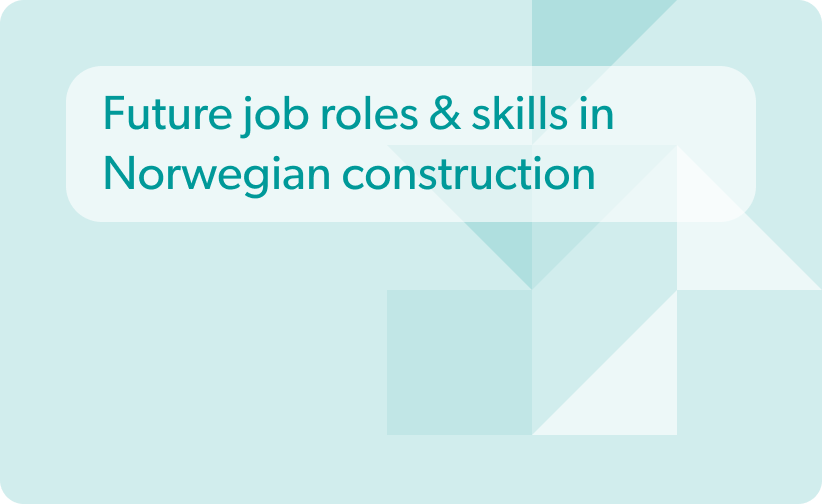Employee experience: what it is, related job roles, and data-driven ways to optimize it
What is the employee experience?
Employee experience (EX) is an emerging business function that focuses on understanding how employees think and feel at every touchpoint on their journey through the company. EX emerged as a direct response to a similar function you may have heard of: customer experience, or CX.
The employee experience is not just about employee engagement, hybrid work policies, friendly office layouts, diversity and equity initiatives, and so on; rather, it’s how these things jointly affect an employee’s journey through the company.
Why does the employee experience matter?
Employees are resources, but they are also people. Most organizations are concerned with treating their employees as individuals, not just cogs in the machine. Keeping employees happy offers great business benefits, and the employee experience goes far beyond this. It’s about maximizing employee value, engagement, happiness, and productivity.
Here are six proven reasons why the employee experience matters:
- Happy employees are up to 20% more productive at work.
- Disengaged employees globally cost organizations between $450 billion and $550 billion annually. Gallup reports that “engaged employees produce better business outcomes than other employees – across industries, company size, and nationality, and in good economic times and bad.”
- 64% of employees do not feel they have a strong workplace culture.
- Organizations with highly engaged employees outperform their peers by 147% in earnings per share.
- Happy employees also perform tasks with 19% greater accuracy and generate 37% more revenue.
In fact, the above facts show that improving the employee experience is a golden opportunity to improve your business.
Data-driven ways to improve the employee experience
Achieving long-lasting results is an ongoing process that requires a deep understanding of the employee experience and effective, ongoing communication with your employees. An objective and reliable approach is to use data and analytics to inform and validate the design and execution of your employee experience strategy.
Measure behavioral data
With behavioral data, management can better understand what motivates individual employees, identify how employees work best, and find ways to naturally connect with each team member based on their needs and engagement drivers.
Behavioral data can also uncover areas for improvement in employees’ day-to-day work, such as by revealing what percentage of employees have weekly one-on-one time with their managers (for coaching, mentoring, and collaboration). These insights can help drive better employee support and leadership behaviors by revealing whether employees are sufficiently connected to and supported by their direct managers. It can also measure after-hours metrics, such as how much time employees spend collaborating with coworkers after hours via email, in-person meetings, calls, instant messaging, etc. This helps inform organizations about potential burnout risks and which teams are most likely to experience burnout.
Prioritize career development
According to a survey by getAbstract, more than half of Millennials (58%) and Gen Zers (52%) indicated that career success depends on frequently updating their skills and knowledge. Additionally, more than one-third of Gen Xers (35%) and Baby Boomers (34%) said career success depends on continuous learning. Overall, employees who engage in frequent learning report feeling more fulfilled, accomplished, and motivated, and are more likely to have a positive experience at work.
One goal of an employee experience manager (yes, it’s about to become an official job title, and we will be exploring it in depth in this article) is to identify the right talent with the right skills to ensure effective workforce planning in order to meet future needs and challenges. Key digital jobs of the future must be strategically planned and filled, future employees must be recruited, and existing employees must be trained and developed in a timely manner.
Workforce career development case study
Find out how the HR team at Austria’s leading telecommunications company, A1, worked with HRForecast to launch a project to tailor workforce development for future data scientists and data engineers.
Improve employee onboarding
The first few weeks on the job are critical in determining how engaged a new employee will be. A well-defined onboarding process sets the tone and makes new hires feel like they play a critical role in their team’s success.
“Up to 20 percent of turnover takes place in the first 45 days,” says Michelle Smith, Vice President of Marketing at O.C. Tanner, a Salt Lake City-based employee recognition and incentive consulting firm. On the other hand, a great onboarding experience ensures 69% of employees stay with a company for three years. Investing in employee onboarding pays off in the form of better engagement and retention.
Surveys to understand different stages of the employee lifecycle
It’s important to understand how people feel at different stages of the employee lifecycle: when they join the company, as they’re developing within the company, and when they leave. What experiences are positive, and where can you, as a company, improve? To deliver personalized experiences, you need to understand how people feel at different stages of the employee lifecycle. For example, multiple surveys can provide more concrete data on different stages of the employee lifecycle.
Engagement surveys are critical at the retention stage because they reveal how involved and engaged employees feel in their job.
Onboarding surveys determine how your new hires feel about their ramp-up time. Gather first impressions from day one, then conduct regular surveys once new hires have had a chance to settle in and form opinions.
Training feedback surveys map an individual’s growth and highlight where the organization can improve learning and development.
Performance reviews can reveal how an employee is performing in your organization. In addition, 360 performance review surveys include senior, junior, and peer reviews, as well as a self-assessment.
Exit surveys are an ideal opportunity to better understand your turnover rate if you can link them to your other lifecycle surveys, such as 360 reviews and employee engagement.
Compensation and benefits optimization surveys allow HR leaders to create a benefits package that helps them attract and retain talent while optimizing their overall spending.
See the rise of employee experience roles
92% of employers worldwide said the employee experience will be a priority over the next three years. – 2021 Employee Experience Survey, Willis Towers Watson
Job satisfaction has become one of the most influential factors in employee retention. It includes having a sense of empowerment, feeling appreciated, and being able to do meaningful and exciting work. One way to ensure this is to hire dedicated employee experience personnel (or make employee experience a key HR function) to ensure the company can meet these expectations. And companies have not been slow to jump on the bandwagon.
The employee experience role, which barely existed a decade ago, now ranks fifth on LinkedIn’s latest list of the 25 fastest-growing jobs in 2023. The steep rise, however, began nearly five years ago. The proof? According to a Staffbase study, from May 2017 to May 2018, the number of employee experience jobs grew at a global annual rate of 96%.
Source: Staffbase
If your company has not yet hired or is just looking to hire an employee experience professional, rest assured: you are not alone. Often, companies miss out on important workforce needs simply because they were unable to forecast them. This is where HRForecast comes in.
We help forecast an organization’s workforce needs based on various factors such as company growth, business strategy, market trends, and industry changes. This involves analyzing current workforce data, identifying future business goals, and determining the skills, knowledge, and competencies needed to achieve those goals. Get in touch with our consultants for help with planning your organization’s future and ensuring you have the right people with the right skills in the right positions at the right time.
Stay up to date with our newsletter
Every month, we’ll send you a curated newsletter with our updates and the latest industry news.




























 info@hrforecast.de
info@hrforecast.de
 +49 89 215384810
+49 89 215384810






